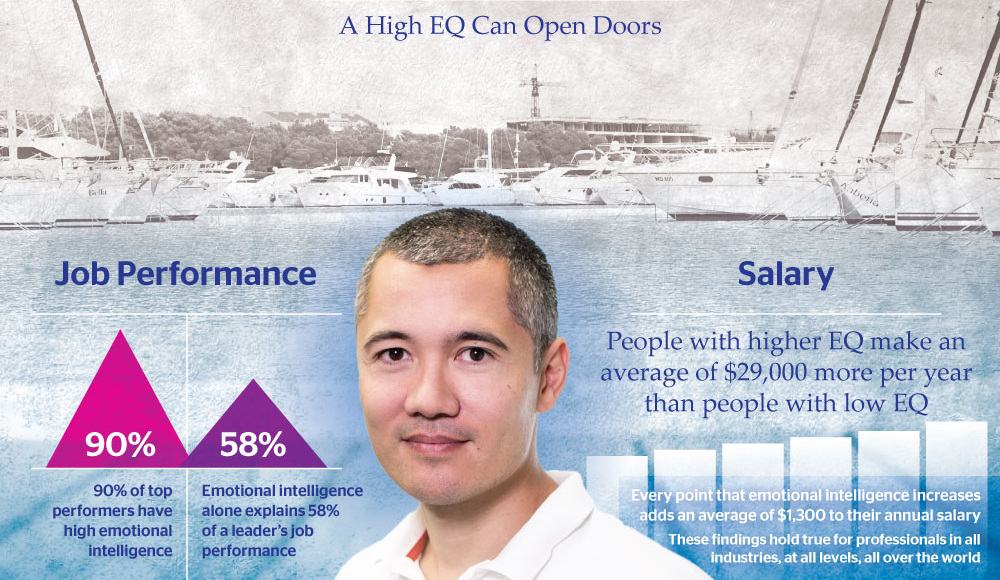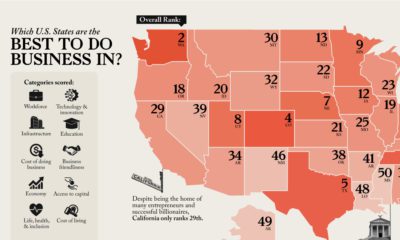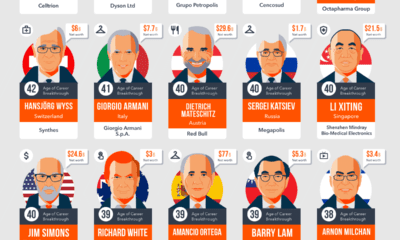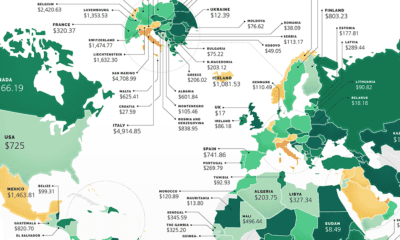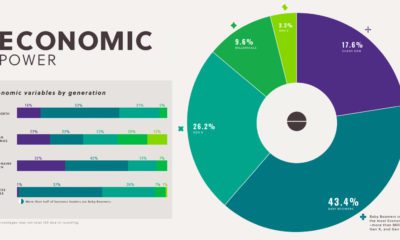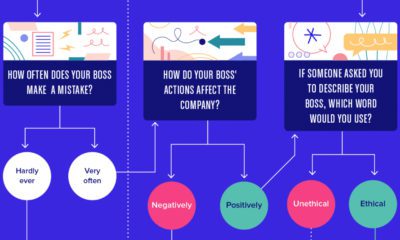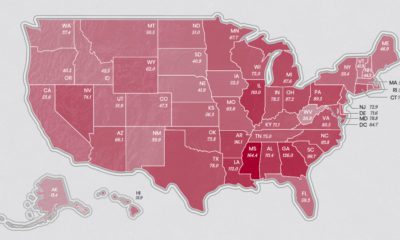This type of intelligence can be measured with IQ, which helps us determine if the test taker is closer to a Stephen Hawking or a Lloyd Christmas on the smarts scale. And certainly, given no other data, a hiring manager would likely prefer to choose someone on the Hawking end of the spectrum. But while IQ is useful, it’s also clear that emotional intelligence (EQ) can be a difference maker in any professional role.
Defining Emotional Intelligence
Have you ever met an entrepreneur with so much empathy and awareness, that they can read people in every situation and relate? Or a salesperson that will always genuinely put your success ahead of their own personal gain? These are powerful qualities – and emotional intelligence is all about the ability to better navigate social situations, including with colleagues, bosses, and clients. Today’s infographic comes from Aumann Bender & Associates, and it defines emotional intelligence while explaining the benefits of higher EQ in both qualitative and quantitative terms.
Even if someone is smart in terms of IQ, it doesn’t necessarily translate to career success. In fact, emotional intelligence explains why 70% of the time, a person with an average IQ can actually outperform a person with more smarts.
Quantifying EQ
Although the topic of emotional intelligence may seem “touchy-feely” for some, the benefits of having a higher EQ are cold, hard facts to ponder:
A whopping 90% of top performers have high EQs Emotional intelligence explains 58% of a leader’s job performance People with higher EQs make an average of $29,000 more per year than people with lower EQs Every one-point increase in EQ equates roughly to $1,300 in annual salary Research shows that EQ is crucial across all industries and sectors
So the next time you’re looking at how to get an edge at the workplace, consider that it’s not just knowledge or skills that you should be after. Sometimes there is a higher ROI in the “soft skills”: being more self-aware, learning how to effectively express your opinions or emotions, finding ways to bounce back from adversity, or managing stress or negative emotions can be more important than technical skills in improving career performance. on Even while political regimes across these countries have changed over time, they’ve largely followed a few different types of governance. Today, every country can ultimately be classified into just nine broad forms of government systems. This map by Truman Du uses information from Wikipedia to map the government systems that rule the world today.
Countries By Type of Government
It’s important to note that this map charts government systems according to each country’s legal framework. Many countries have constitutions stating their de jure or legally recognized system of government, but their de facto or realized form of governance may be quite different. Here is a list of the stated government system of UN member states and observers as of January 2023: Let’s take a closer look at some of these systems.
Monarchies
Brought back into the spotlight after the death of Queen Elizabeth II of England in September 2022, this form of government has a single ruler. They carry titles from king and queen to sultan or emperor, and their government systems can be further divided into three modern types: constitutional, semi-constitutional, and absolute. A constitutional monarchy sees the monarch act as head of state within the parameters of a constitution, giving them little to no real power. For example, King Charles III is the head of 15 Commonwealth nations including Canada and Australia. However, each has their own head of government. On the other hand, a semi-constitutional monarchy lets the monarch or ruling royal family retain substantial political powers, as is the case in Jordan and Morocco. However, their monarchs still rule the country according to a democratic constitution and in concert with other institutions. Finally, an absolute monarchy is most like the monarchies of old, where the ruler has full power over governance, with modern examples including Saudi Arabia and Vatican City.
Republics
Unlike monarchies, the people hold the power in a republic government system, directly electing representatives to form government. Again, there are multiple types of modern republic governments: presidential, semi-presidential, and parliamentary. The presidential republic could be considered a direct progression from monarchies. This system has a strong and independent chief executive with extensive powers when it comes to domestic affairs and foreign policy. An example of this is the United States, where the President is both the head of state and the head of government. In a semi-presidential republic, the president is the head of state and has some executive powers that are independent of the legislature. However, the prime minister (or chancellor or equivalent title) is the head of government, responsible to the legislature along with the cabinet. Russia is a classic example of this type of government. The last type of republic system is parliamentary. In this system, the president is a figurehead, while the head of government holds real power and is validated by and accountable to the parliament. This type of system can be seen in Germany, Italy, and India and is akin to constitutional monarchies. It’s also important to point out that some parliamentary republic systems operate slightly differently. For example in South Africa, the president is both the head of state and government, but is elected directly by the legislature. This leaves them (and their ministries) potentially subject to parliamentary confidence.
One-Party State
Many of the systems above involve multiple political parties vying to rule and govern their respective countries. In a one-party state, also called a single-party state or single-party system, only one political party has the right to form government. All other political parties are either outlawed or only allowed limited participation in elections. In this system, a country’s head of state and head of government can be executive or ceremonial but political power is constitutionally linked to a single political movement. China is the most well-known example of this government system, with the General Secretary of the Communist Party of China ruling as the de facto leader since 1989.
Provisional
The final form of government is a provisional government formed as an interim or transitional government. In this system, an emergency governmental body is created to manage political transitions after the collapse of a government, or when a new state is formed. Often these evolve into fully constitutionalized systems, but sometimes they hold power for longer than expected. Some examples of countries that are considered provisional include Libya, Burkina Faso, and Chad.

